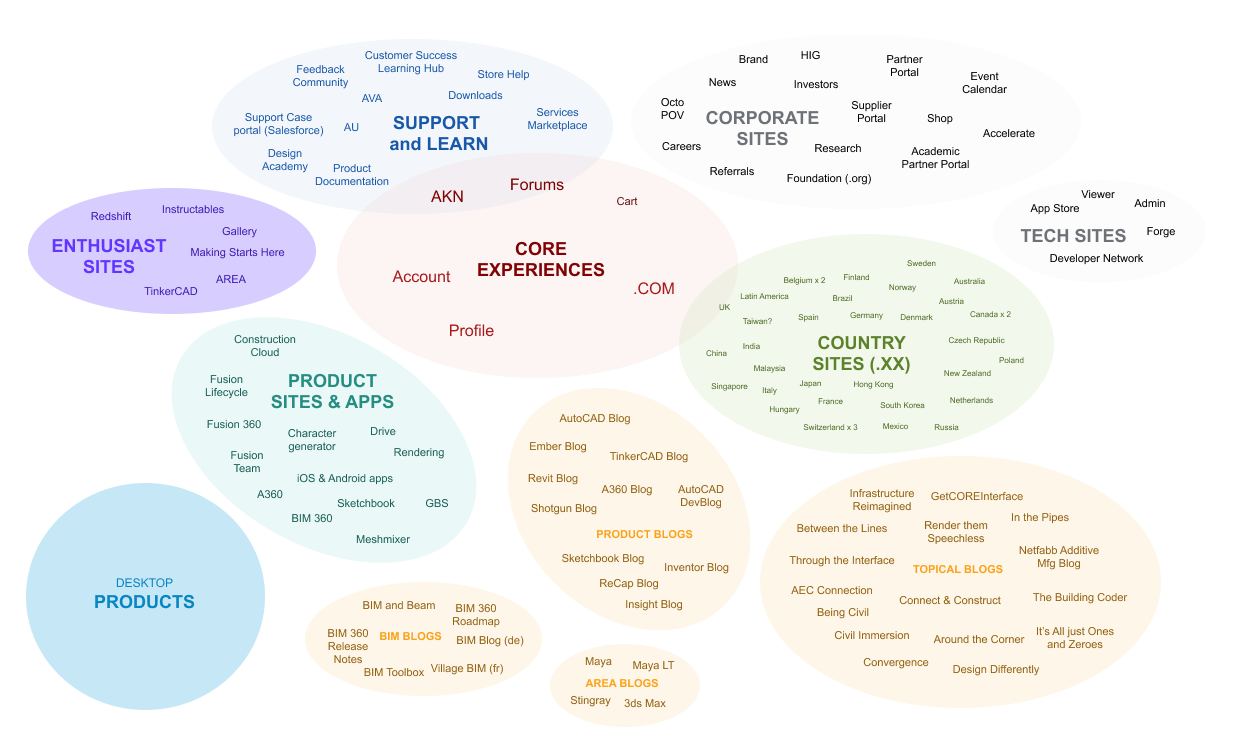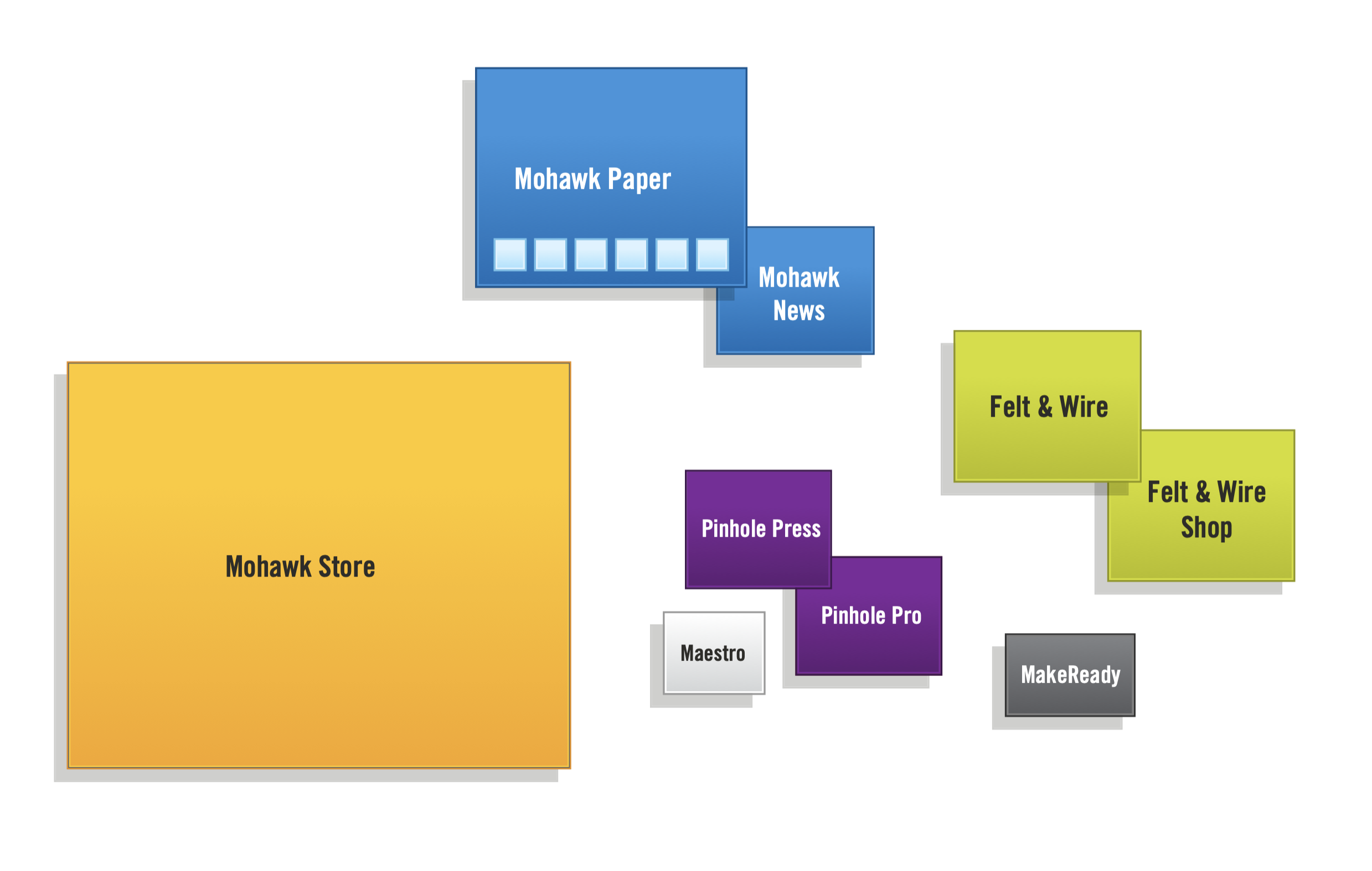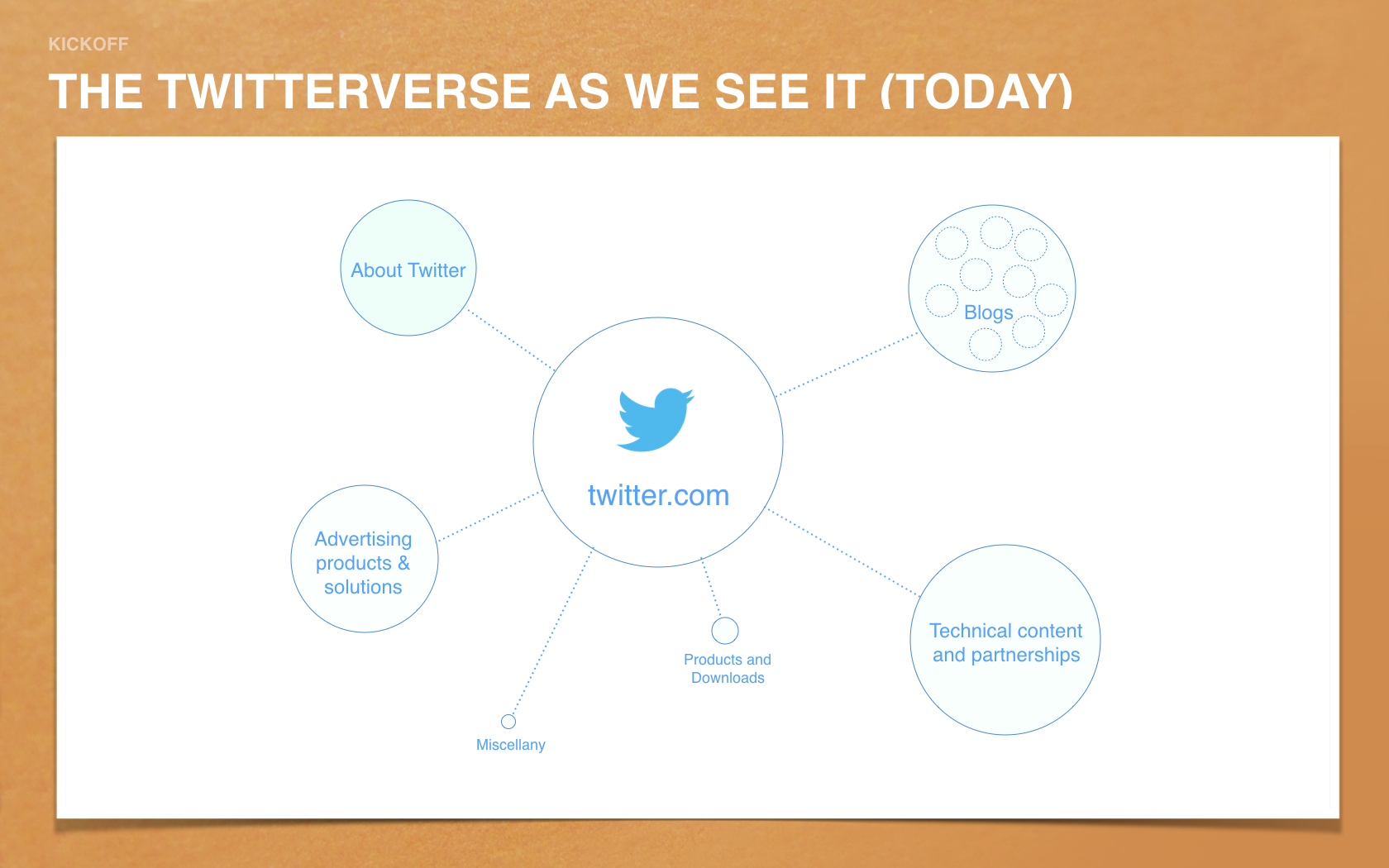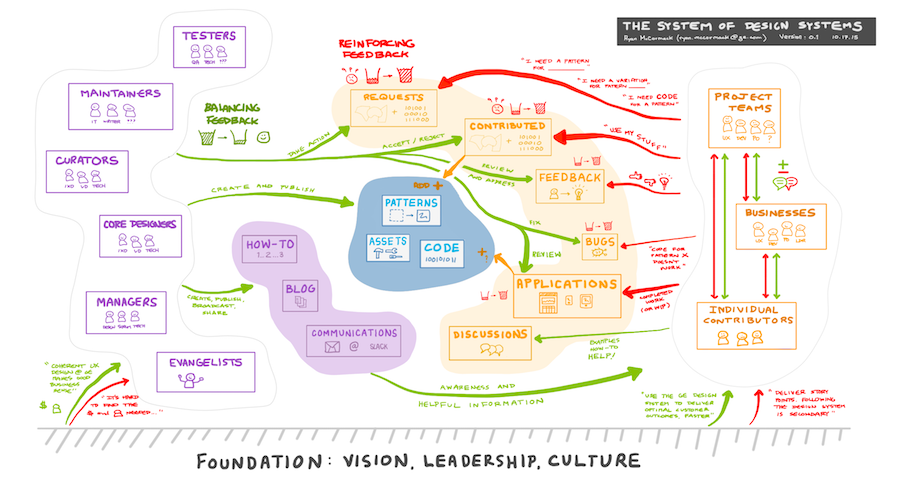[A system is] … a set of elements or parts that is coherently organized and inter-connected in a pattern or structure that produces a characteristic set of behaviors, often classified as its function or purpose.
Donella Meadows, Thinking in Systems
Companies and organizations are systems that have manifestations in both the physical and digital worlds. Digital ecosystems are the complex organizations of bits and bytes and servers and sites on which that company and its customers rely. If we think in this digital light and break down Meadows’ definition:
- Elements: The pieces of a digital ecosystem include many different varieties of web sites (e.g., external, internal, marketing, support, third-party content sites, blogs), applications (iOS, MacOS, Android, Windows), and people (employees, partners, suppliers, and end users), all of whom access this digital ecosystem (in part or in whole).
- Organization and interconnection: Architecture and navigational systems define a digital ecosystem’s organization and interconnection. If the pieces of the ecosystem are all within the control of the company/org, then hopefully there’s some sort of underlying architecture and navigational system that empowers users to move within them. When it comes to third-party sites or other not within centralized control, connections can often become much weaker.
- Function or purpose: When it comes to an entire digital ecosystem, this often winds up becoming the most pertinent question, because the architecture of these systems is often both incremental and accidental, which means their function can often be unclear.
My approach as a UX architect
When tasked with analyzing large-scale digital ecosystems, my methodology is simple to describe, but can be challenging and time-consuming to execute:
- Audit: Identify all of the relevant elements of the system, including any permissions or authorizations required. Understand the key players (e.g., product managers, property owners, business strategists). Look at the design and navigation patterns in use that create interconnection. As an example from one large ecosystem I analyzed:
- 115+ sites and counting….new ones appear after every business acquisition
- 50+ stakeholders, including executives, subject-matter experts, and design and engineering practitioners who acted as key players
- A menagerie of inconsistent and confusing navigational systems that obscured the true extent of the ecosystem
- Identify and analyze any data that’s relevant to how real people engage with this ecosystem, either in part(s) or in whole. This data can take many forms:
- Direct user feedback (e.g., through products, intercept surveys, forums)
- User research (e.g., moderated interviews or unmoderated testing that might expose different behaviors)
- Traffic analysis (e.g., navigational flows within a site, cross-site navigation behaviors)
- Engagement and/or conversion metrics
- Assess and synthesize findings, which would include ecosystem diagrams, information architectures, user flows, key statistics
- Think strategically: Step back from everything and work with others to answer the key questions: What’s the purpose of this system? Is it working as intended? If not, what should we change to create our desired outcomes? Where should we start?
Simple, right?



